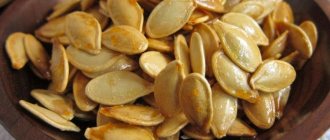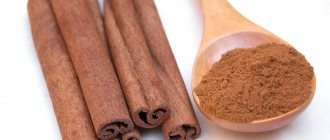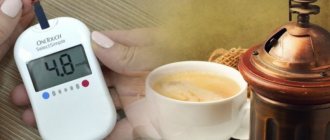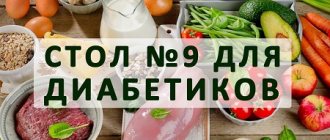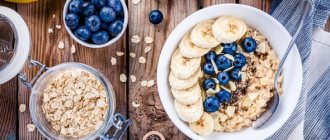Don't skip breakfast. Cut down on fats. Avoid gluten. Drink at least eight glasses of water a day. Drink less coffee. Sound familiar? Let's figure out whether you need to follow these tips based on scientific achievements.
Scientist and doctor Tim Spector, author of the book “Mandatory Breakfast, Bad Coffee and Dangerous Fast Food,” dispels myths about “healthy” eating, based on scientific advances. He touches on diet food, veganism, eating fish, caffeine, vitamin supplements, and organic foods. Tim Spector is Professor of Genetic Epidemiology at King's College London and Director of the TwinsUK Registry. Since 1992, he has been proving that many diseases are related not only to diet and environment, but also to genetics. He has published more than 700 articles in scientific journals, including Science and Nature. He is the director of the Human Microbiome Research Project and the author of several books and an academic award winner. She also conducts research in the field of epigenetics - the science of how our genes are influenced by the environment. We publish an excerpt from his book.
Myth: Breakfast is the most important meal of the day.
“A proper breakfast is the key to a good day!”, “Eat breakfast like a king!”
- the idea that a morning meal is mandatory and is the key to energy, concentration and good mood throughout the day is hammered into us like a mantra from early childhood. Over the last half century, we have been bombarded with messages extolling the health benefits of dry processed cereals, muesli and oatmeal. But what exactly do we mean by breakfast? A British mountain of various fried things? Or a typical Italian breakfast consisting of cappuccino and a cigarette? After all, cappuccino contains milk and sugar, which means it contains all three macronutrients - carbohydrates, fats and proteins - and will have the same effect on metabolism as a serving of food: it will break our overnight fast. What about black espresso or tea without sugar? It contains fiber and polyphenols, but no carbohydrates, which provide energy. Many people who say they don't eat breakfast actually start their mornings with tea or coffee with milk - which means they still consume something.
Diet food
According to the classification of Professor M.I. Pevzner, the “Table No. 9” diet is intended for diabetics, which allows you to control stable blood sugar levels. Products allowed for consumption have a low GI and take a long time to be processed by the body. It is necessary to eliminate foods that increase sugar and cholesterol when consumed. A sample list includes:
What fruits can you eat if you have diabetes?
- First meal. Soups, borscht, solyanka based on pork, duck, fatty fish, as well as milk soups. White rice and vermicelli (noodles) should not be used for dressing.
- Meat. Pork, duck, goose. Any sausages, smoked meats and canned meats (stewed meat, pate).
- Fish. Salted, smoked products, canned fish.
- Dairy products. Sour cream more than 10% fat, cheese - more than 45%, homemade cottage cheese -18%, glazed cheese curds.
- Cereals. Semolina, a white variety of rice.
- Beverages. Packaged juices and bottled tea, sweet cocktails.
- Fast food, fatty mayonnaise-based sauces, synthetic ketchups.
- Bakery. Puff pastry, shortbread, sweet yeast and choux pastry.
Root vegetables on the menu should be limited to potatoes and beets. The responsibility of a diabetic is to daily monitor the glucose entering the body and strictly adhere to the principles of a diabetic diet:
- rational drinking and eating regimen (amount of fluid – 1.5–2 l/day, food intake – every 3–4 hours);
- compliance with calorie standards and GI indicators of foods and dishes;
- eliminating simple carbohydrates from the diet that cause a sharp increase in sugar;
- introduction to the menu of plant proteins, vegetables (in any form), herbal decoctions that reduce glucose levels;
- refusal to prepare dishes using the culinary method of frying;
- limiting salt and salty foods;
- Keeping a Diabetes Diary.
To control your glycemia, you need to read food labels carefully. Canned food, drinks, and shelf-stable foods contain sweet preservatives. Eating them will invariably raise your blood sugar.
It is extremely undesirable to consume cereals and legumes in canned form for diabetes. In fresh form, they are permitted food products.
What is breakfast?
The lack of a good definition of what breakfast is is one of the reasons why there has been little research in this area.
In Anglo-Saxon culture, breakfast is considered an essential part of life. However, most modern fad diets, particularly the Paleo diet, tend to follow the example of our ancestors, who lived thousands of years ago and led a nomadic lifestyle. But as applied to breakfast, this topic is rarely discussed. When I visited the Tanzanian Hadza tribe (the last true hunter-gatherers remaining in East Africa), I noticed that they do not have breakfast in their daily routine, although they go to bed and get up at approximately the same time. They don’t even have a special word in their language for morning meal. Usually, when men wake up, they go hunting on an empty stomach - later they can pick and eat some berries along the way. Women remain in or near the camp and may sometimes prepare simple food such as baobab porridge or eat stored honey, but usually not before 10 am. This means that during the day they do not eat anything for 14 or 15 hours, including sleep at night, which contrasts with the Western habit: our night fast lasts only 8-10 hours.
Hyperglycemia
Hyperglycemia (increased glucose levels) is a sign of impaired production of the endocrine pancreatic hormone, insulin, or the inability of its uptake by cells. Standard blood sugar values vary depending on age, as well as in women during the perinatal period. Pregnant women need to pay increased attention to glucose levels, since high sugar levels may lead to the development of gestational diabetes.
To obtain objective results, the analysis is performed on an empty stomach and after eating. Prediabetes, or diabetes, is diagnosed by persistently elevated results from several blood tests. In the absence of abnormalities in the functioning of the endocrine system, average sugar values fluctuate between 3.9–5.2 mmol/l on an empty stomach. In addition to potential diabetes, high blood sugar can be caused by:
- irrational physical activity;
- distress (permanent nervous tension);
- chronic diseases of the digestive system;
- unhealthy diet and alcohol abuse;
- incorrect use of hormonal medications.
The digital indicator indicates the level of glucose concentration
Whatever the cause, glucose levels need to be adjusted to normal levels. Dietary nutrition, in this case, plays a key role. You should not engage in self-diagnosis! A one-time increase in readings is not evidence of diabetes. Only an endocrinologist can make a correct diagnosis.
Oatmeal or roti?
Historians who study human eating habits may disagree with me, but I believe that breakfast probably became widespread during the Victorian era.
Before that, in the morning we usually ate the leftovers of yesterday's dinner. Breakfast also stands out because it is the only meal in which people all over the world eat the same thing day after day, year after year, and do not get bored. They even feel lost if they don't eat their usual breakfast one morning; be it two pieces of toast, a boiled egg, oatmeal, or (on another continent) dim sum, roti or saag aloo (dim sum - light snacks in Chinese cuisine, usually served with tea; roti - traditional Indian bread; saag aloo - Indian green dish, potatoes and spices). I remember how difficult it was for me to adjust to curry and vegetables for breakfast when I was working in a hospital in Nairobi as a medical student. Japanese and Korean breakfasts are also completely opposite from Western ones and usually include rice, vegetables, miso soup, pickled vegetables, spicy kimchi or fermented soybeans.
One of the reasons why breakfast may depend on the culture and history of a people, and not be something common to all humanity, is perhaps that the food must somehow be preserved overnight, and then time and effort must be spent on preparing it. in the morning. This means that before the invention of refrigerators, only rich people who had servants could have breakfast. This all changed with the advent of cheap, processed food that can be stored for a long time and is easy to prepare. Kellogg's Corn Flakes became the first major breakfast cereal brand. They were invented in 1894 and were initially considered a very healthy product. Millions of bowls of this cereal are now eaten every day around the world. They are made from refined corn flour and have a very high glycemic index of 81, even higher than potatoes (78).
After removing the nutritious fat-containing parts of the grain, the remaining part is heated in pressure cookers for several hours, and then it is rolled out flat and fried. The result consists mostly of fried starch, which has virtually zero nutritional value. Therefore, various chemicals, including vitamins, are added to corn flakes. Profit margins for breakfast cereals are over 40%; This allows manufacturers to spend approximately 25% of their breakfast revenue on advertising to brainwash children and teenagers and influence the opinions of adults - the general public and nutritionists - about the nutritional value of the cereal. Due to the popularity and profitability of breakfast cereals, there are now 5,000 different brands of breakfast cereals produced in the United States alone.
Foods with high and medium GI
There is no need to calculate the glycemic index yourself. There is a ready-made table of foods that are excluded from the diet of a diabetic patient.
| Products | G.I. |
| dates | 146 |
| wheat bread (white) | 136 |
| cakes, cookies, croutons (fried) | 100 |
| potatoes (fries and fried) / mashed | 95/90 |
| pies and buns | 88 |
| corn flakes, popcorn and pasta | 85 |
| rice porridge, waffles, caramel candies | 80 |
| fried zucchini, baked pumpkin | 75 |
| seasoned croutons, soda | 74 |
| watermelon | 72 |
| cheesecakes, ice cream, jam (jams), milk chocolate, halva, dumplings | 70 |
Nutritional features must comply with:
- stages of the disease (compensated, subcompensated, decompensated);
- type of disease (insulin dependent, non-insulin dependent);
- prescribed doses of medications;
- the presence of complications and concomitant pathologies;
- general condition of the patient;
- level of physical activity.
Depending on the listed individual health indicators, food with an average GI value is allowed. The treating endocrinologist can best advise which foods should be avoided and which ones can be eaten. The table shows limited products with an average glycemic index.
| Products | Gl |
| unleavened dough (flatbread, pita without filling) | 69 |
| croissants without filling | 67 |
| muesli, pineapple, diet biscuit | 66 |
| bananas, melon, boiled jacket potatoes | 65 |
| raisin | 64 |
| pizza with tomatoes (without meat filling) | 60 |
| papaya | 58 |
| mango, oatmeal cookies, persimmon | 55 |
| yoghurts, tomato soup, gazpacho type | 52 |
| buckwheat, buckwheat flour pancakes | 50 |
| green peas (canned) | 48 |
| beans (white, red), kiwi | 42 |
| chickpeas | 41 |
Excessive consumption of foods from the medium glycemic category can negatively affect health. Sugar will increase depending on the amount eaten, since a larger volume of food containing glucose requires greater insulin costs. With insulin deficiency, hyperglycemia may develop. Proper nutrition is a method of treating diabetes. Neglecting recommendations leads to severe complications of the disease.
Does breakfast “kick start” your metabolism?
Some beliefs about breakfast are so widely held that most people never think to question them. For example, the fact that breakfast somehow “starts” our metabolism in the morning, allowing us to more efficiently digest food throughout the day. And also the fact that if you skip breakfast, you will get hungry, then overeat and, as a result, gain weight. Despite the lack of evidence, these ideas are presented as scientific facts.
In Britain, for example, they were included in National Health Service guidelines developed by civil servants from the Public Health Service, a committee of specialist scientists who receive data from the food industry. Similar statements are found in the US Department of Agriculture's recommendations for Americans and in the Australian government's current healthy eating guidelines. The same statements about the need for breakfast can be found in the recommendations of health authorities in other countries, as well as in the press and the Internet around the world. But what if we were misled? What if this is just another nutrition myth?
In 2021, a systematic review and meta-analysis of studies looking at the effects of skipping breakfast was finally published in the British Medical Journal. The review authors reviewed 52 studies and rejected most of them because they were poorly designed and lacked proper randomization (in other words, the results of the studies could not possibly be objective), and four because they were conducted in low-income countries. Of the remaining 11 randomized clinical trials that qualified, the majority were conducted in the US and UK and only one in Japan.
The studies varied in both length (from one day to six weeks) and quality. Seven of the studies tracked participants' changes in weight as well as variations in their energy intake, which was determined by measuring their metabolic rate. The conclusion of this meta-analysis was the same as previous reviews based on less information: there is no evidence that skipping breakfast makes you gain weight or lower your basal metabolic rate. In fact, evidence shows that the opposite is true: skipping breakfast may be a successful strategy for weight loss. Why were nutritionists of the past so wrong and why didn’t they point out the lack of quality data sooner?
There may be several reasons, and they all relate to traditional beliefs about nutrition and food.
What vegetables are allowed to eat if you have diabetes?
Many recommendations for creating a diet for people with type 1 and 2 diabetes mellitus advise unlimitedly increasing the proportion of vegetables in the diet, such as avocados, Brussels sprouts, cauliflower, zucchini, broccoli, zucchini, onions, chicory, green beans, mushrooms, sauerkraut, cucumbers. , olives, celery, eggplant, greens (spinach, dill, parsley, cilantro, green onions), peppers, radishes 1.
It is better to cook vegetables by steaming, stewing, baking in parchment or foil, or grilling without adding oil. It is better if the finished dish is slightly undercooked than overcooked. Al dente vegetables keep you full longer, and their carbohydrates are absorbed more slowly.
Often and little by little
Lately, nutritionists have been advising eating little and often to avoid stress on the body: when digesting a hearty meal, the body secretes insulin, sometimes in large quantities, and this can ultimately lead to the development of insulin resistance and diabetes.
They say following this advice is especially important in the afternoon, when glucose and insulin levels peak higher and your metabolic rate drops. This advice is based on the results of studies conducted on small animals, as well as data from a few and short-term experiments in humans. The groundbreaking study - which changed the minds of all doctors and nutritionists - was published more than 30 years ago in the prestigious New England Journal of Medicine.
In the study, participants were given the same food in the same quantities per day, but in the first two weeks they received it throughout the day in the form of 17 small meals. After the break, the same amount of the same food was divided into three servings. The experimenter found that in the group that ate small meals, blood insulin levels decreased by 27% and a stress marker (cortisol) decreased by 20%. This is all very impressive until you realize that this famous study only had seven participants, so the results may well be due to chance and definitely should not be generalized to all people and all dietary needs.
Authorized Products
A diet to lower blood sugar involves reducing bread consumption to 300 g per day. Preference should be given to rye, wheat from second grade flour, protein-bran and protein-wheat.
A balanced diet includes many vegetables that can be used raw, stewed and boiled as side dishes, casseroles and added to vegetarian soups. Vegetables containing up to 5% carbohydrates are preferred (pumpkin, zucchini, cucumbers, lettuce, cabbage, squash, eggplant). Potatoes are allowed with restrictions taking into account the carbohydrate norm for each patient individually. High-carbohydrate foods also include: carrots, green peas, and beets. You can eat vegetable caviar and seaweed. The first courses are prepared in a weak broth with vegetables. Borscht, cabbage soup, beetroot soup, okroshka, mushroom soup and soups with meatballs - with permitted cereals and potatoes (limited).
It is allowed to eat lean meats, chicken, and turkey. Meat dishes are prepared boiled, baked and fried. The same requirements apply to fish. The amount of cereal is limited to the limits of carbohydrate norms for each patient - these are buckwheat, barley, pearl barley, millet and oatmeal; legumes are allowed (lentils are preferred).
Fermented milk drinks (kefir, yogurt, matsoni) should be present in the diet daily. Milk, semi-fat cottage cheese and dishes made from it. Mild cheese in small quantities and sour cream (only in dishes). Eggs can be consumed one per day (whole) soft-boiled and prepared in the form of protein omelettes. Butter and all kinds of vegetable oils are added to prepared dishes. Drinks you can drink include tea with sweetener, coffee with milk, vegetable juices, unsweetened fruit juices, and rosehip decoction.
Sweet and sour berries and fruits in any form are allowed: fresh, jelly, compotes, mousses. How can you replace sugar in desserts and drinks? Xylitol, sorbitol and fructose. Xylitol no more than 30 g per day, fructose 1 tsp. three times a day with drinks. Honey is allowed in the amount of 1 tsp. 2-3 times a day. Products with sugar substitutes are allowed: candies, waffles, cookies. However, in this case, you need to know the norm - 1-2 candies three times a week.
Table of permitted products
| Proteins, g | Fats, g | Carbohydrates, g | Calories, kcal | |
Vegetables and greens | ||||
| zucchini | 0,6 | 0,3 | 4,6 | 24 |
| cabbage | 1,8 | 0,1 | 4,7 | 27 |
| sauerkraut | 1,8 | 0,1 | 4,4 | 19 |
| cauliflower | 2,5 | 0,3 | 5,4 | 30 |
| cucumbers | 0,8 | 0,1 | 2,8 | 15 |
| radish | 1,2 | 0,1 | 3,4 | 19 |
| tomatoes | 0,6 | 0,2 | 4,2 | 20 |
| pumpkin | 1,3 | 0,3 | 7,7 | 28 |
Fruits | ||||
| apricots | 0,9 | 0,1 | 10,8 | 41 |
| watermelon | 0,6 | 0,1 | 5,8 | 25 |
| cherry | 0,8 | 0,5 | 11,3 | 52 |
| pears | 0,4 | 0,3 | 10,9 | 42 |
| nectarine | 0,9 | 0,2 | 11,8 | 48 |
| peaches | 0,9 | 0,1 | 11,3 | 46 |
| plums | 0,8 | 0,3 | 9,6 | 42 |
| apples | 0,4 | 0,4 | 9,8 | 47 |
Berries | ||||
| cowberry | 0,7 | 0,5 | 9,6 | 43 |
| blackberry | 2,0 | 0,0 | 6,4 | 31 |
| raspberries | 0,8 | 0,5 | 8,3 | 46 |
| currant | 1,0 | 0,4 | 7,5 | 43 |
Cereals and porridges | ||||
| buckwheat (kernel) | 12,6 | 3,3 | 62,1 | 313 |
| oat groats | 12,3 | 6,1 | 59,5 | 342 |
| corn grits | 8,3 | 1,2 | 75,0 | 337 |
| pearl barley | 9,3 | 1,1 | 73,7 | 320 |
| millet cereal | 11,5 | 3,3 | 69,3 | 348 |
| barley grits | 10,4 | 1,3 | 66,3 | 324 |
Bakery products | ||||
| Rye bread | 6,6 | 1,2 | 34,2 | 165 |
| bran bread | 7,5 | 1,3 | 45,2 | 227 |
| doctor's bread | 8,2 | 2,6 | 46,3 | 242 |
| whole grain bread | 10,1 | 2,3 | 57,1 | 295 |
Confectionery | ||||
| diabetic crackers | 10,5 | 5,7 | 73,1 | 388 |
Raw materials and seasonings | ||||
| xylitol | 0,0 | 0,0 | 97,9 | 367 |
| honey | 0,8 | 0,0 | 81,5 | 329 |
| fructose | 0,0 | 0,0 | 99,8 | 399 |
Dairy | ||||
| milk | 3,2 | 3,6 | 4,8 | 64 |
| kefir | 3,4 | 2,0 | 4,7 | 51 |
| sour cream 15% (low fat) | 2,6 | 15,0 | 3,0 | 158 |
| curdled milk | 2,9 | 2,5 | 4,1 | 53 |
| acidophilus | 2,8 | 3,2 | 3,8 | 57 |
| yogurt | 4,3 | 2,0 | 6,2 | 60 |
Cheeses and cottage cheese | ||||
| cottage cheese 0.6% (low fat) | 18,0 | 0,6 | 1,8 | 88 |
| cottage cheese 1.8% (low-fat) | 18,0 | 1,8 | 3,3 | 101 |
| cottage cheese 5% | 17,2 | 5,0 | 1,8 | 121 |
Meat products | ||||
| beef | 18,9 | 19,4 | 0,0 | 187 |
| beef tongue | 13,6 | 12,1 | 0,0 | 163 |
| veal | 19,7 | 1,2 | 0,0 | 90 |
| rabbit | 21,0 | 8,0 | 0,0 | 156 |
Bird | ||||
| chicken | 16,0 | 14,0 | 0,0 | 190 |
| turkey | 19,2 | 0,7 | 0,0 | 84 |
Eggs | ||||
| chicken eggs | 12,7 | 10,9 | 0,7 | 157 |
Fish and seafood | ||||
| herring | 16,3 | 10,7 | — | 161 |
Oils and fats | ||||
| butter | 0,5 | 82,5 | 0,8 | 748 |
| corn oil | 0,0 | 99,9 | 0,0 | 899 |
| olive oil | 0,0 | 99,8 | 0,0 | 898 |
| sunflower oil | 0,0 | 99,9 | 0,0 | 899 |
| ghee | 0,2 | 99,0 | 0,0 | 892 |
Non-alcoholic drinks | ||||
| mineral water | 0,0 | 0,0 | 0,0 | — |
| coffee | 0,2 | 0,0 | 0,3 | 2 |
| instant chicory | 0,1 | 0,0 | 2,8 | 11 |
| black tea without sugar | 0,1 | 0,0 | 0,0 | — |
Juices and compotes | ||||
| carrot juice | 1,1 | 0,1 | 6,4 | 28 |
| plum juice | 0,8 | 0,0 | 9,6 | 39 |
| tomato juice | 1,1 | 0,2 | 3,8 | 21 |
| pumpkin juice | 0,0 | 0,0 | 9,0 | 38 |
| rose hip juice | 0,1 | 0,0 | 17,6 | 70 |
| Apple juice | 0,4 | 0,4 | 9,8 | 42 |
| * data is per 100 g of product | ||||
Binge eating
The concern that skipping breakfast may lead to overeating the rest of the day is theoretically justified: those who skip breakfast tend to eat more at lunch and also tend to be less active.
As for metabolism, it is triggered by an interesting process called food thermogenesis: eating itself stimulates the formation of heat in the body. But the main point is that these cunning compensatory mechanisms, even together, are not able to compensate for the calorie deficit resulting from skipping breakfast. Some misconceptions about breakfast, based on rumors and unreliable research, are firmly entrenched as tenets of nutrition science, even among experts. Nutritionists, doctors and food industry workers, as well as the general public, have been deceived by big headlines based on few observations. These studies found that people who skip breakfast are more likely to be overweight. But skipping breakfast is not the cause of excess weight. The skewed results are due to poor study design. Those who skipped breakfast were, on average, more likely to have lower incomes and therefore have a poorer overall diet than those who ate breakfast. All of these social factors were independently associated with excess weight, which was therefore not a result of skipping breakfast. Research has also shown that overweight people were more likely to diet, crash, and then feel guilty and try to skip meals.
Dietetics against diabetes
According to the classification of therapeutic nutrition according to M. Pevzner, patients with diabetes are prescribed the “Table No. 9” diet. It is based on the principle of measuring the nutritional qualities of a product in bread units (XE = 12 g of carbohydrates) per 100 grams. The daily diet of a diabetic must be kept within the framework of 12 to 24 units. Initially, a diet with a minimum dose of XE is recommended. Subsequently, it is possible to increase by one unit per week, provided the body reacts adequately and there is no increase in sugar levels.
Varieties of diet (9-A and 9-B) are prescribed depending on the type of disease. For non-insulin-dependent diabetes type 2, “Table 9-A” is used. The diet is aimed at reducing body weight, since this factor is fundamental in the occurrence of the disease. In insulin-dependent type 1 diabetes, the body stops producing the hormone insulin, which is responsible for transporting glucose into tissues and cells.
To maintain the patient's vitality, insulin is injected. Therefore, “Table No. 9-B” is recommended, with an increased carbohydrate load. Therapeutic nutrition is prescribed by an endocrinologist. The doctor will determine the necessary type of diet depending on the individual course of the disease. Eating behavior and doses of administered insulin are closely interrelated. A self-composed diet requires the approval of the attending physician.
Calculating XE allowed nutritionists to formulate the correct menu that inhibits the development of hyperglycemia
Breakfast cereals
Despite obvious flaws in design and a steady increase in the number of randomized controlled trials with contrary results, the belief that skipping meals is harmful has been around for decades and is still one of the eight principles of healthy eating in the UK National Health Service guidelines, as well as in current USDA and Australian Dietary Guidelines.
Thriving food conglomerates have huge marketing budgets and great influence over government officials; it allows food corporations to influence public policy—so much so that long-debunked principles find their way into government-sanctioned guidelines. When you think about how much money a multibillion-dollar industry would lose if, for example, people stopped eating breakfast cereal, it's easy to see why myths about breakfast are so common and persistent.
So what good do we get from skipping breakfast? A number of positive effects likely stem from the fact that we fast for longer periods of time as a result. There is now growing evidence that limiting the window during which we eat and extending the window during which we don't eat may help lower insulin levels and help some people lose weight. Some of these recent, seemingly counterintuitive discoveries can be understood when considered in the context of the GI microbiome. This community of 100 trillion microbes, found primarily in the large intestine, behaves like an additional organ of the body, influencing our health and metabolism. Many microbes have circadian rhythms similar to ours, and microorganisms differ greatly in composition and function when they are hungry versus when they are fed.
Although the discipline is relatively new, some evidence suggests that microbial communities suffer from long periods of fasting, but short periods of fasting—such as skipping breakfast—may benefit them. After 4-6 hours without food, certain types of microbes begin to multiply and feed on carbohydrates from the layer of mucus lining the intestines, essentially cleaning it out, resulting in a more efficient and healthier intestinal barrier. It's possible that microbial communities, like ourselves, also need to relax and rest as part of their circadian rhythm, which is why rest is important for our gut health.
What increases sugar
- Sweets.
- Dried fruits.
- Sweet drinks.
- Confectionery, bakery, pasta.
- Cereals.
- Legumes.
- Sweet fruits and berries.
Despite the fact that fatty foods have a zero glycemic index and contain virtually no bread units, they also increase glucose. This happens slowly (digestion lasts 5-6 hours), so the readings can go off scale after this time. A large amount of fatty acids is fraught with the formation of atherosclerotic plaques and tissue insulin resistance.
Breakfast and memory
In addition to the false promise of weight loss, another common argument used to market breakfast cereals is that children won't be able to concentrate in school without breakfast.
There are many tales about how children, supposedly deprived of breakfast, freak out in class or perform poorly on assignments due to low blood glucose levels. Again, this evidence is based largely on outside observation and is likely to be biased in the same way as corresponding studies on adults. Some independent reviews have looked at many studies in this area and found them to be of poor quality. Twenty-one studies looked at just the effect of eating breakfast on a child's ability to pay attention that day. Only eight studies found a positive effect of breakfast. In the rest, the effect appeared only in boys suffering from malnutrition. Similar results were found when memory ability was tested, and no consistent patterns associated with breakfast type could be identified. In general, these were artificial scenarios that are difficult to extrapolate to the real world. To examine a longer-term picture of the impact of breakfast on academic performance, 11 studies were conducted involving long-term school breakfast programs.
In seven out of eight, no clear increase in concentration was found. Four out of five also showed no positive effect of breakfast on memory. This means that there is no authoritative scientific evidence that children should be forced to eat breakfast if they are eating normally. Some children and teenagers simply don't feel hungry in the morning.
Is it possible to eat dried fruits if you have diabetes?
Dried fruits contain minerals, vitamins and antioxidants, as well as healthy fiber. The polyphenolic antioxidants present in them improve blood flow, help support the digestive system, reduce oxidative stress and reduce the risk of developing many diseases. They are low in fat, sodium or cholesterol and can serve as natural substitutes for refined sugar. However, during the cooking process, some dried fruits are coated with sugar and syrup before drying to make them sweeter.
Different dried fruits have different glycemic index. Low GI dried fruits are the best choice because they have little effect on blood sugar and are relatively healthy.
Dates (different varieties from 60 to 140), raisins (59), figs (61), banana (65), mango (55-60), pineapple (50) have high and medium GI. Low-glycemic fruits - prunes (40), dried apples (35), apricots (dried apricots) 35, dried dogwood (20), melon (35).
Is it possible to skip breakfast?
Many people in developed countries around the world regularly skip breakfast.
Concrete data is difficult to come by, although the oatmeal and breakfast cereal industry has persistently sponsored studies that have found skipped breakfast rates to reach "dangerous" levels of 50% in countries like the UK. As people get older, they are less likely to skip breakfast and generally fall into the routine prescribed by their culture. Many others, including myself, eat breakfast regularly and enjoy it. I don't want to say that absolutely everyone who is overweight can lose weight if they start skipping breakfast. Some people naturally tend to prefer earlier meals, while others prefer later ones. This may be due to the unique metabolism and special composition of the intestinal microbiome of each person. I repeat once again: there is no universal solution to the question of whether and when to have breakfast. Skipping breakfast a few times definitely won't hurt; and I encourage readers to experiment to see how it makes them feel, both in the short term in terms of mood and tone, and in the long term. You could, for example, skip breakfast for a month and see if that leads to weight gain or loss. If it becomes too difficult, try skipping meals every now and then. I sometimes do this to boost my metabolism, as well as extend my overnight fast and help my germs. Breakfast may indeed be the most important meal of the day, but it's clearly not for everyone.
Based on materials from the book “Mandatory Breakfast, Harmful Coffee and Dangerous Fast Food”
Spices in the diet
Some spices are useful foods for diabetes. This is due to their active participation in metabolic processes, in particular, inhibition of gluconeogenesis. When eating food with spices, the absorption of sugars into the blood slows down. Thus, glycemia does not progress. The leading role is given to cinnamon. Its use for high blood sugar is approved by official medicine.
It is recommended to flavor dishes with this spice (chicken, cottage cheese, porridge), as well as prepare drinks that can stabilize glucose levels. Other seasonings allowed for diabetics are oregano (oregano), cloves, ground pepper (black, red, white). In addition to their therapeutic effect, spices will enhance the taste of the dishes you eat.
